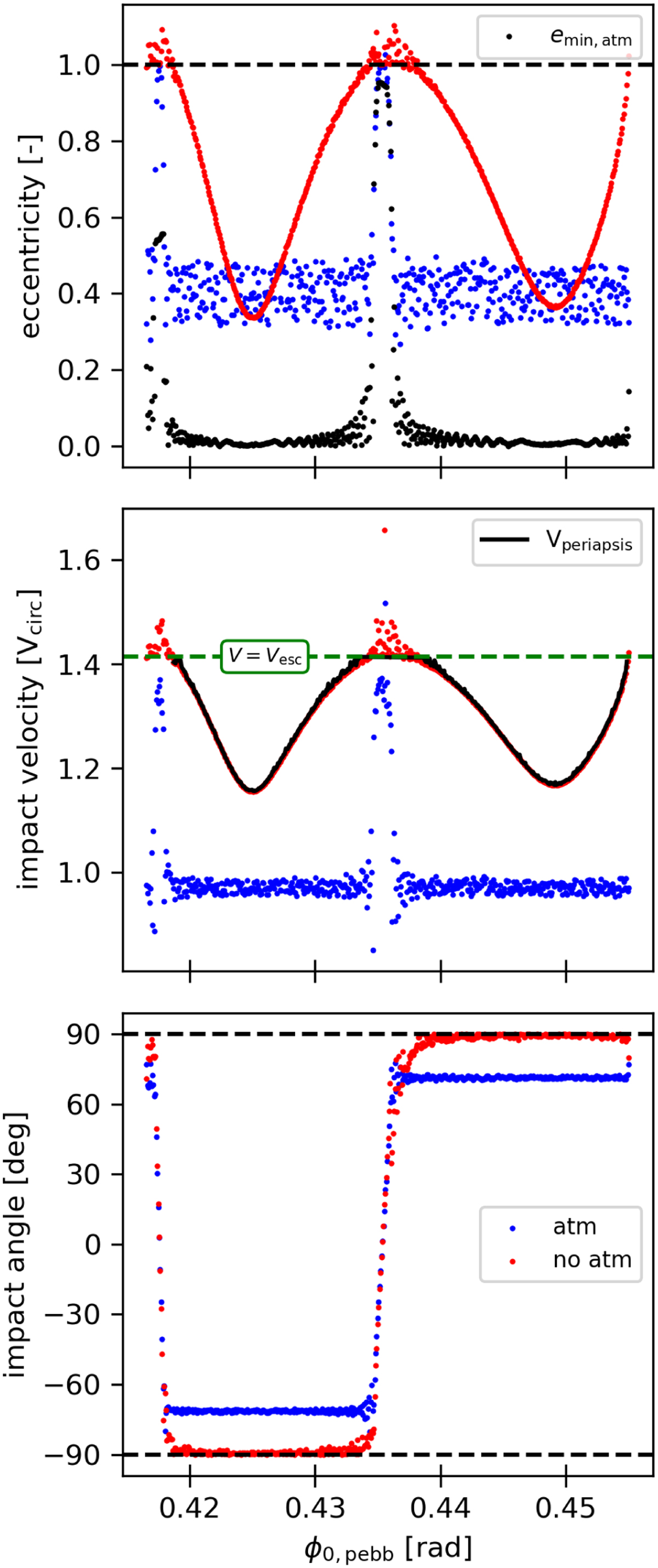Fig. 6

Download original image
Eccentricity, impact velocity, and impact angle of pebbles at the moment of collision with the planet as a function of starting position within the collision cross-section. The orbits in the presence of an atmosphere (blue) are significantly circularised compared to the orbits in the absence of an atmosphere (red), reducing the mean eccentricity from 0.708 to 0.432. However, the black dots in the top panel show the minimum eccentricity during the trajectories with an atmosphere, which is almost zero, indicating that at some point the eccentricity increases again. The impact velocity in the presence of an atmosphere is slightly below the circular velocity, while without an atmosphere it is equal to the velocity of the final orbits at periapsis. The latter, in combination with the almost perfectly tangential impacts of atmosphere-less pebbles, shows that the orbital decay without an atmosphere is minimal. With an atmosphere, the impact angle is at about ±70°. This, in combination with the slightly sub-Keplerian impact velocity, signifies a strong orbital decay in the final stage of the orbit right before impact.
Current usage metrics show cumulative count of Article Views (full-text article views including HTML views, PDF and ePub downloads, according to the available data) and Abstracts Views on Vision4Press platform.
Data correspond to usage on the plateform after 2015. The current usage metrics is available 48-96 hours after online publication and is updated daily on week days.
Initial download of the metrics may take a while.


